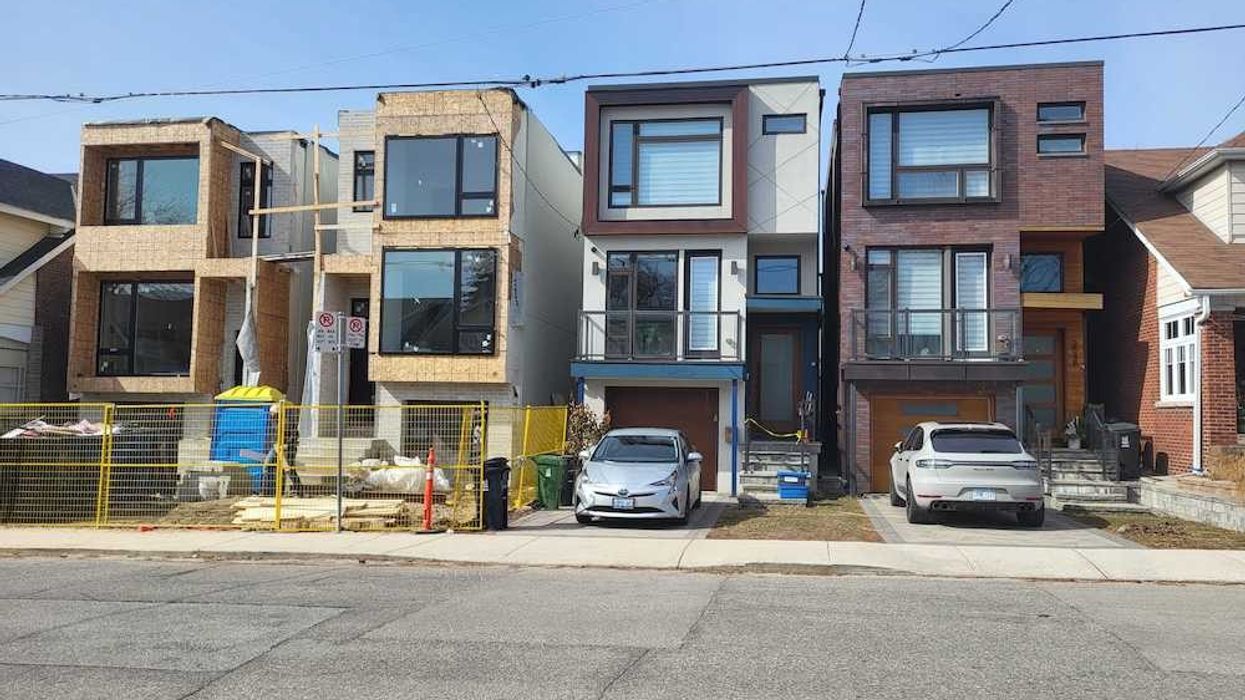It’s not even the houses themselves -- it’s the land. In the GTA, that rectangle of earth is a gold mine.
Contractors or investors can buy a million-dollar home, tear it down, build two houses -- and after months or years of construction, still turn a worthwhile profit. In a market crushed for supply, the math around lot-splitting adds up.
“I think it’s a great thing,” says Teuta Guci, a real estate agent with iPro Realty who specializes in the east end. “It is a great benefit for everyone. We have a shortage of houses -- a housing crisis. So if we have a bigger lot, why not build two houses? And accommodate two families?”
There are critics, however; neighbours are unlikely to be happy with construction nearby, and there might be complaints around two tall homes.
“I have to be neutral with it, especially being a realtor, because you have both sides,” says Tyler Pope, a sales representative with the Page & Percival Real Estate Team, with expertise in the west end.
“But yes, clients have told me that they lose their privacy, they lose a bit more natural light. They say, ‘I bought this house because it was a quiet little street, and I love the area. And now it’s doubled in the amount of people that are here because everyone’s tearing down.’ And then I also have neighbours and people that worry about the environment with tearing down these trees, and what’s happening with our green space.”
Retired city planner David Godley recently said the same: Losing trees, changing neighbourhood character with tall and narrow ‘soldier houses,’ allowing developers to dictate density increases on quiet streets -- he was officially opposed to the trend.
Doubling Assets: Keep One House, Sell or Rent the Other
Neither realtor sees lot-splitting ending any time soon. In fact, homeowners are getting in on the action -- regular families are using the split-and-build technique to keep family close, or increase their net worth.
“I have had a client that purchased a home and they weren’t really sure what to do with it; they wondered if it should be renovated,” Pope says. “And then they looked at the housing market and then looked at the how much money they would make if they were to sever. And so they ended up severing right here in Mimico.”
Now this couple has options, she adds: they can keep the second home for their son, or stay in one home and sell the other.
“It’s not only developers,” Pope says, “there are families that are doing it too.”
In an earlier chat about neighbourhood eyesores, realtor Carol-Anne Schneider mused that property-rich baby boomers are selling and retiring as millionaires -- a whole generation who bought real estate when it was dirt cheap. “This market has allowed so many homeowners to become millionaires that never would have in their lifetime,” Schneider pointed out.
Now, for buyers of detached homes on wider lots, they’re also sitting on lot-splitting potential. They can renovate and upgrade that old, tiny bungalow, or sever and potentially double their assets in the longterm. Millionaires to multimillionaires -- land in the GTA keeps finding new ways to enrich those that own it.
"Some People Appreciate It, and Some People are Concerned"
Guci thinks it should be easier to split lots and build. Based on her own and her clients’ personal experiences, she says neighbour complaints are given too much weight in the approval process.
“It adds value to the property, it adds value to the area, it makes a neighbourhood look better and beautiful,” Guci says. “It’s good for the City as well, they get the taxes. It adds to the economy, more [jobs], more materials purchased -- if you see all the angles, it has a lot of pros.”
READ: New Task Force Proposal Will Open Up the Yellow Belt -- And It's About Time
But it can cause bidding-war heartbreak, too. Pope was representing a buying family who were intending to renovate and live in the home -- but were outbid by a developer. It will be a tear-down.
On the bright side? Within a couple years, there will be two new homes there. And Pope says the new builds she sees are typically well done and sell quickly.
“To be honest, these are beautiful, move-in ready homes,” she says. “They are energy efficient. They’re modern, contemporary, they’re large, they’re great for a family. A lot of them have balconies and walkouts. Whether you like the style of it or not, that’s obviously a personal preference. And it is a different look for a neighbourhood that has smaller homes.”
“You know, change is inevitable,” Pope adds. “It’s how we deal with it that’s really going to matter. And I think that’s what’s starting to happen -- some people appreciate it, and some people are concerned about it.”





















